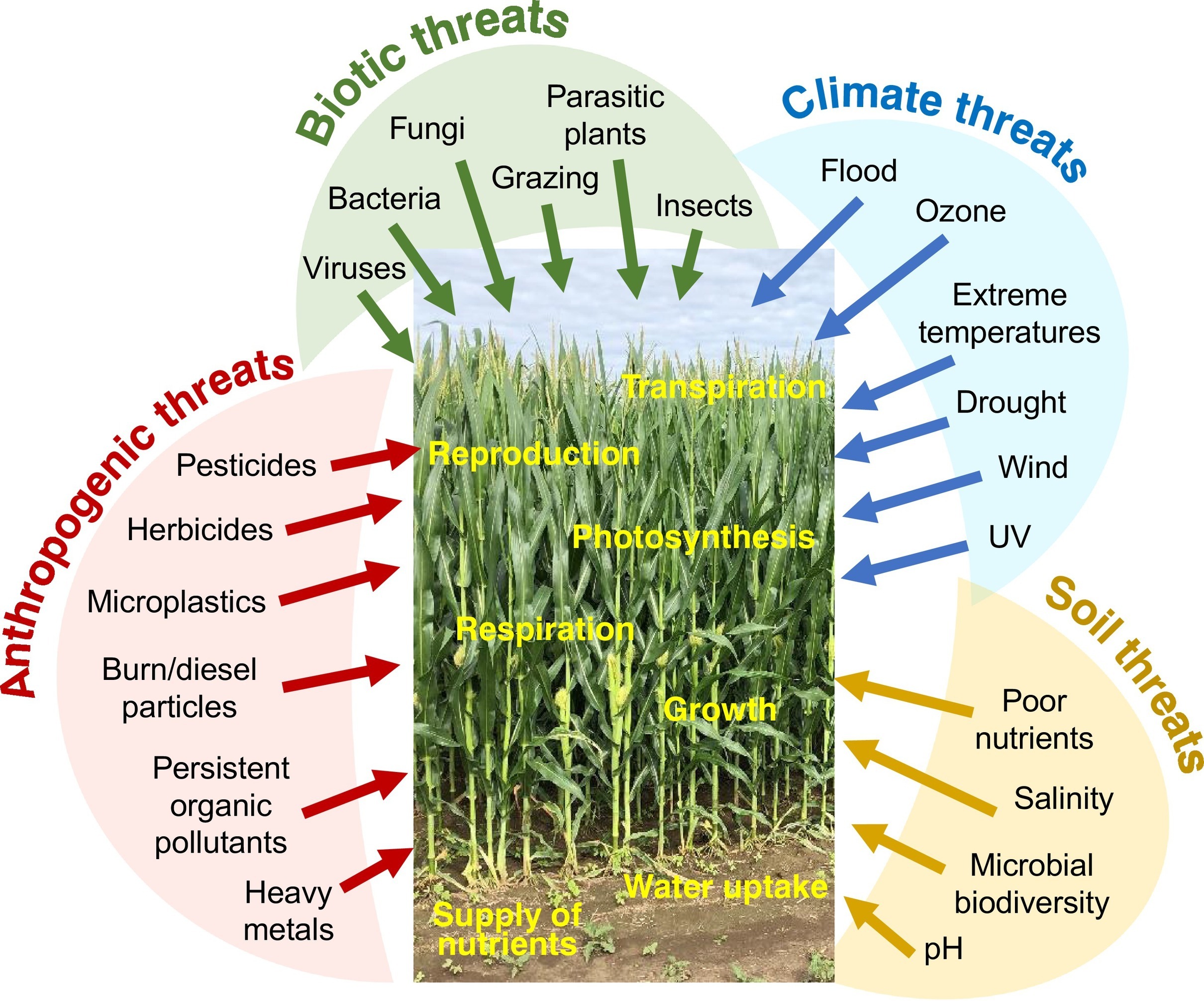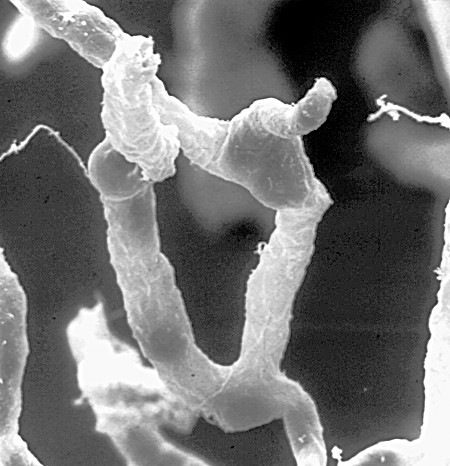|
GABA Tea
Rolled GABA tea GABA tea (other names: Gabaron, Jia Wu Long cha, Jing Bai Long cha, 佳叶龙茶) is tea that has undergone a special processing which leads to high accumulation of GABA (the chief inhibitory neurotransmitter in the central nervous system) in the tea leaves. This process involves storing the leaves in an oxygen-free nitrogen gas chamber. This new way of processing tea was created in Japan by the former MAFF National Research Institute of Tea (currently the National Institute of Vegetables and Tea Science) in 1984. Dr. Tsushida and his collaborators at the MAFF began developing GABA-rich tea in 1984 and successfully produced a new type tea in which almost all glutamic acid has been converted to GABA without changing the content of catechin or caffeine. They found that a large amount of GABA accumulated in green tea through six to ten hours in an anaerobic (oxygen-free) chamber filled with nitrogen. They examined further the GABA content of green, oolong and bla ... [...More Info...] [...Related Items...] OR: [Wikipedia] [Google] [Baidu] |
Green Tea
Green tea is a type of tea that is made from '' Camellia sinensis'' leaves and buds that have not undergone the same withering and oxidation process which is used to make oolong teas and black teas. Green tea originated in China, and since then its production and manufacture has spread to other countries in East Asia. Several varieties of green tea exist, which differ substantially based on the variety of ''C. sinensis'' used, growing conditions, horticultural methods, production processing, and time of harvest. The two main components unique to green tea are " catechins" and " theanine," and the health effects of these components are attracting a great deal of attention in Japan and abroad. History Tea consumption has its legendary origins in China during the reign of mythological Emperor Shennong. A book written by Lu Yu in 618–907 AD (Tang dynasty), '' The Classic of Tea'' (), is considered important in green tea history. The ''Kissa Yōjōki'' (喫茶養生記 ... [...More Info...] [...Related Items...] OR: [Wikipedia] [Google] [Baidu] |
Stress (biology)
Stress, either physiological, biological or psychological, is an organism's response to a stressor such as an environmental condition. Stress is the body's method of reacting to a condition such as a threat, challenge or physical and psychological barrier. There are two hormones that an individual produces during a stressful situation, these are well known as adrenaline and cortisol. There are two kinds of stress hormone levels. Resting (basal) cortisol levels are normal everyday quantities that are essential for standard functioning. Reactive cortisol levels are increases in cortisol in response to stressors. Stimuli that alter an organism's environment are responded to by multiple systems in the body. In humans and most mammals, the autonomic nervous system and hypothalamic-pituitary-adrenal (HPA) axis are the two major systems that respond to stress. The sympathoadrenal medullary (SAM) axis may activate the fight-or-flight response through the sympathetic nervous system ... [...More Info...] [...Related Items...] OR: [Wikipedia] [Google] [Baidu] |
Frontiers Media
Frontiers Media SA is a publisher of peer-reviewed, open access, scientific journals currently active in science, technology, and medicine. It was founded in 2007 by Kamila and Henry Markram, and has since expanded to other academic fields. Frontiers is based in Lausanne, Switzerland, with other offices in London, Madrid, Seattle and Brussels. In 2022, Frontiers employed more than 1,400 people, across 14 countries. All Frontiers journals are published under a Creative Commons Attribution License. As of 2022, Frontiers publishes over 185 academic journals, including 48 journals indexed within the Science Citation Index Expanded, and 4 journals indexed within the Social Sciences Citation Index, with a total of 51 journals ranked with an impact factor. Frontiers journals are included in the Directory of Open Access Journals (DOAJ). Frontiers is also a member of the Open Access Scholarly Publishers Association (OASPA), a participating publisher and supporter of the Initiative for ... [...More Info...] [...Related Items...] OR: [Wikipedia] [Google] [Baidu] |
Enteric Nervous System
The enteric nervous system (ENS) or intrinsic nervous system is one of the main divisions of the autonomic nervous system (ANS) and consists of a mesh-like system of neurons that governs the function of the gastrointestinal tract. It is capable of acting independently of the sympathetic and parasympathetic nervous systems, although it may be influenced by them. The ENS is nicknamed the "second brain". It is derived from neural crest cells. The enteric nervous system is capable of operating independently of the brain and spinal cord, but does rely on innervation from the vagus nerve and prevertebral ganglia in healthy subjects. However, studies have shown that the system is operable with a severed vagus nerve. The neurons of the enteric nervous system control the motor functions of the system, in addition to the secretion of gastrointestinal enzymes. These neurons communicate through many neurotransmitters similar to the CNS, including acetylcholine, dopamine, and serotonin. ... [...More Info...] [...Related Items...] OR: [Wikipedia] [Google] [Baidu] |
Blood–brain Barrier
The blood–brain barrier (BBB) is a highly selective semipermeable border of endothelial cells that prevents solutes in the circulating blood from ''non-selectively'' crossing into the extracellular fluid of the central nervous system where neurons reside. The blood–brain barrier is formed by endothelial cells of the capillary wall, astrocyte end-feet ensheathing the capillary, and pericytes embedded in the capillary basement membrane. This system allows the passage of some small molecules by passive diffusion, as well as the selective and active transport of various nutrients, ions, organic anions, and macromolecules such as glucose and amino acids that are crucial to neural function. The blood–brain barrier restricts the passage of pathogens, the diffusion of solutes in the blood, and large or hydrophilic molecules into the cerebrospinal fluid, while allowing the diffusion of hydrophobic molecules (O2, CO2, hormones) and small non-polar molecules. Cells of th ... [...More Info...] [...Related Items...] OR: [Wikipedia] [Google] [Baidu] |
Taiwan
Taiwan, officially the Republic of China (ROC), is a country in East Asia, at the junction of the East and South China Seas in the northwestern Pacific Ocean, with the People's Republic of China (PRC) to the northwest, Japan to the northeast, and the Philippines to the south. The territories controlled by the ROC consist of 168 islands, with a combined area of . The main island of Taiwan, also known as ''Formosa'', has an area of , with mountain ranges dominating the eastern two-thirds and plains in the western third, where its highly urbanised population is concentrated. The capital, Taipei, forms along with New Taipei City and Keelung the largest metropolitan area of Taiwan. Other major cities include Taoyuan, Taichung, Tainan, and Kaohsiung. With around 23.9 million inhabitants, Taiwan is among the most densely populated countries in the world. Taiwan has been settled for at least 25,000 years. Ancestors of Taiwanese indigenous peoples settled the island a ... [...More Info...] [...Related Items...] OR: [Wikipedia] [Google] [Baidu] |
Taiwanese Tea
Taiwanese tea includes four main types: oolong tea, black tea, green tea and white tea. The earliest record of tea trees found in Taiwan is from 1717 in Shui Sha Lian (), present-day Yuchi and Puli, Nantou County. Some of the teas retain the island country's former name, Formosa. Oolongs grown in Taiwan account for about 20% of world production. History According to Lian Heng's ''General History of Taiwan'', in the late 18th century, Ke Chao () brought some tea trees from Fujian into Taiwan and planted them in Jieyukeng (), in the area of modern-day Ruifang District, New Taipei City. However, transaction records indicate that tea business in Muzha area started as early as late 18th century. These records indicate that tea has been sold in Taiwan for more than two centuries. In 1855, Lin Fengchi () brought the Qingxin oolong () plants from the Wuyi Mountains of Fujian to Taiwan and planted them in Dongding Village ( Lugu, Nantou County). This is said to be the origin of Tun ... [...More Info...] [...Related Items...] OR: [Wikipedia] [Google] [Baidu] |
Oolong
Oolong (, ; (''wūlóngchá'', "dark dragon" tea)) is a traditional semi-oxidized Chinese tea ('' Camellia sinensis)'' produced through a process including withering the plant under strong sun and oxidation before curling and twisting.Zhongguo Chajing pp. 222–234, 271–282, 419–412, chief editor: Chen Zhongmao, publisher: Shanghai Wenhua Chubanshe (Shanghai Cultural Publishers) 1991. Most oolong teas, especially those of fine quality, involve unique tea plant cultivars that are exclusively used for particular varieties. The degree of oxidation, which varies according to the chosen duration of time before firing, can range from 8 to 85%, depending on the variety and production style. Oolong is especially popular in south China and among ethnic Chinese in Southeast Asia as is the Fujian preparation process known as the Gongfu tea ceremony. Different styles of oolong tea can vary widely in flavor. They can be sweet and fruity with honey aromas, or woody and thick with roast ... [...More Info...] [...Related Items...] OR: [Wikipedia] [Google] [Baidu] |
Caffeine
Caffeine is a central nervous system (CNS) stimulant of the methylxanthine class. It is mainly used recreationally as a cognitive enhancer, increasing alertness and attentional performance. Caffeine acts by blocking binding of adenosine to the adenosine A1 receptor, which enhances release of the neurotransmitter acetylcholine. Caffeine has a three-dimensional structure similar to that of adenosine, which allows it to bind and block its receptors. Caffeine also increases cyclic AMP levels through nonselective inhibition of phosphodiesterase. Caffeine is a bitter, white crystalline purine, a methylxanthine alkaloid, and is chemically related to the adenine and guanine bases of deoxyribonucleic acid (DNA) and ribonucleic acid (RNA). It is found in the seeds, fruits, nuts, or leaves of a number of plants native to Africa, East Asia and South America, and helps to protect them against herbivores and from competition by preventing the germination of nearby seeds, as well as ... [...More Info...] [...Related Items...] OR: [Wikipedia] [Google] [Baidu] |
Catechin
Catechin is a flavan-3-ol, a type of secondary metabolite providing antioxidant roles in plants. It belongs to the subgroup of polyphenols called flavonoids. The name of the catechin chemical family derives from '' catechu'', which is the tannic juice or boiled extract of ''Mimosa catechu'' ('' Acacia catechu'' L.f). Chemistry Catechin possesses two benzene rings (called the A- and B-rings) and a dihydropyran heterocycle (the C-ring) with a hydroxyl group on carbon 3. The A-ring is similar to a resorcinol moiety while the B-ring is similar to a catechol moiety. There are two chiral centers on the molecule on carbons 2 and 3. Therefore, it has four diastereoisomers. Two of the isomers are in trans configuration and are called ''catechin'' and the other two are in cis configuration and are called ''epicatechin''. The most common catechin isomer is (+)-catechin. The other stereoisomer is (-)-catechin or ''ent''-catechin. The most common epicatechin isomer is (-)-epic ... [...More Info...] [...Related Items...] OR: [Wikipedia] [Google] [Baidu] |
.jpg)




